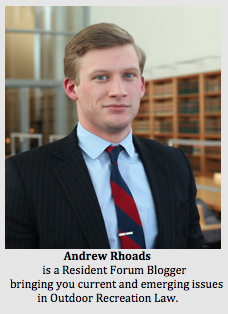The National Ski Areas Association tracks and publishes a wide swathe of statistical information related to the skiing and snowboarding industry each year. Thirty-seven (37) states currently have operating ski areas, and, during the 2013-2014 season, four hundred seventy (470) total ski areas were operated within those states. Pennsylvania had twenty-eight (28) operating ski areas last season.
In the United States, approximately 9.6 million active skiers and snowboarders hit the slopes last season, totaling approximately 56.5 million skier/snowboarder visits (one person visiting a ski area for all or any part of a day or night). Due to the volume of skiers, injuries do occur. Last season, fifty-two (52) catastrophic injuries (paralysis, broken necks, broken backs, and life-altering head injuries) and thirty-two (32) fatalities occurred at the various ski areas. The ski industry has a ten (10) year average of fifty (50) catastrophic injuries per season and thirty-nine (39) fatalities per season.
Looking at these numbers, outside observers may think that ski resorts would be inundated each season with lawsuits from injured skiers. However, the use of waivers, releases, and participation agreements allow ski resorts to avoid liability. These documents tend to justify, excuse, or clear a ski resort from any fault or guilt arising from accidents or damages. Courts typically invalidate these agreements if the documents are signed by minors, the documents are signed on behalf of minors by their parents or guardians, the release or waiver lacks specificity, or if the documents waive rights contrary to public policy.
In Chepkevich v. Hidden Valley Resort, L.P., 2 A.3d 1174 (Pa. 2010), the Pennsylvania Supreme Court held that a ski resort could not be held liable for the negligent conduct of a ski lift operator resulting in a skier’s injury. The Court reasoned that the pre-injury release signed by the plaintiff skier barred her suit. After examining public policy considerations, the Court upheld the release, finding that Pennsylvania encourages the sport of skiing and also that Pennsylvania courts, and the majority of other state courts, had previously upheld such releases for negligence. The Court said that recreational sporting activities may be viewed differently in the context of liability releases because each party is free to participate, or not, in the recreational sporting activity, and, therefore, is free to sign, or not, the release form. The Court’s different view of recreational sporting activities is due to recreational sporting activities’ optional nature, as opposed to contracts that concern non-optional matters that create serious public policy concerns. In summation, Chepkevich states that the mere fact that a skier would not be permitted to ski at a resort, but for a signed release, does not render the release an adhesion contract.
In Chepkevich, the Pennsylvania Supreme Court did not address whether a release for recklessness was against public policy. However, in a 2012 case, Tayar v. Camelback Ski Corp.,47 A.3d 1190 (Pa. 2012), the Pennsylvania Supreme Court was given the opportunity to rule on the enforceability of a liability release for a ski resort’s reckless conduct. Reckless conduct differs from negligence because recklessness requires “conscious action or inaction” that creates substantial risk of harm to others, while negligence only concerns “unconscious inadvertence.” The Court reiterated that liability releases are generally disfavored unless three conditions are met: 1) the exculpatory provisions do not contravene public policy; 2) the contract is between persons concerning their private affairs; and 3) each party is a free bargaining agent so that the contract is not one of adhesion. Considering these three conditions, the Court held that releases from reckless conduct are unenforceable. Ultimately, the Court acknowledged that while a ski resort involves a “voluntarily recreational setting involving private parties,” releases of reckless conduct conflict with the public policy of encouraging parties to “adhere to minimal standards of care and safety.”
Twenty-eight (28) other states have also ruled on whether a release or waiver can protect a ski resort from recklessness. Twenty-three (23) of those states have held that reckless conduct cannot be released. Interestingly, two (2) states permit the release of reckless conduct, while three (3) states have held that releases from reckless conduct and negligence are unenforceable.
What do all of these court decisions mean for skiers in the United States this season? Most releases signed by skiers this season will release ski resorts from ordinary negligence, and state courts will uphold the enforcement of these releases. However, in most states, ski resorts will not be permitted to enforce releases from liability for their intentional or reckless conduct. Thus, it is in a skier’s best interest to keep himself or herself updated on how their respective states define ordinary negligence.
The Flagship Publication of Penn State Law
